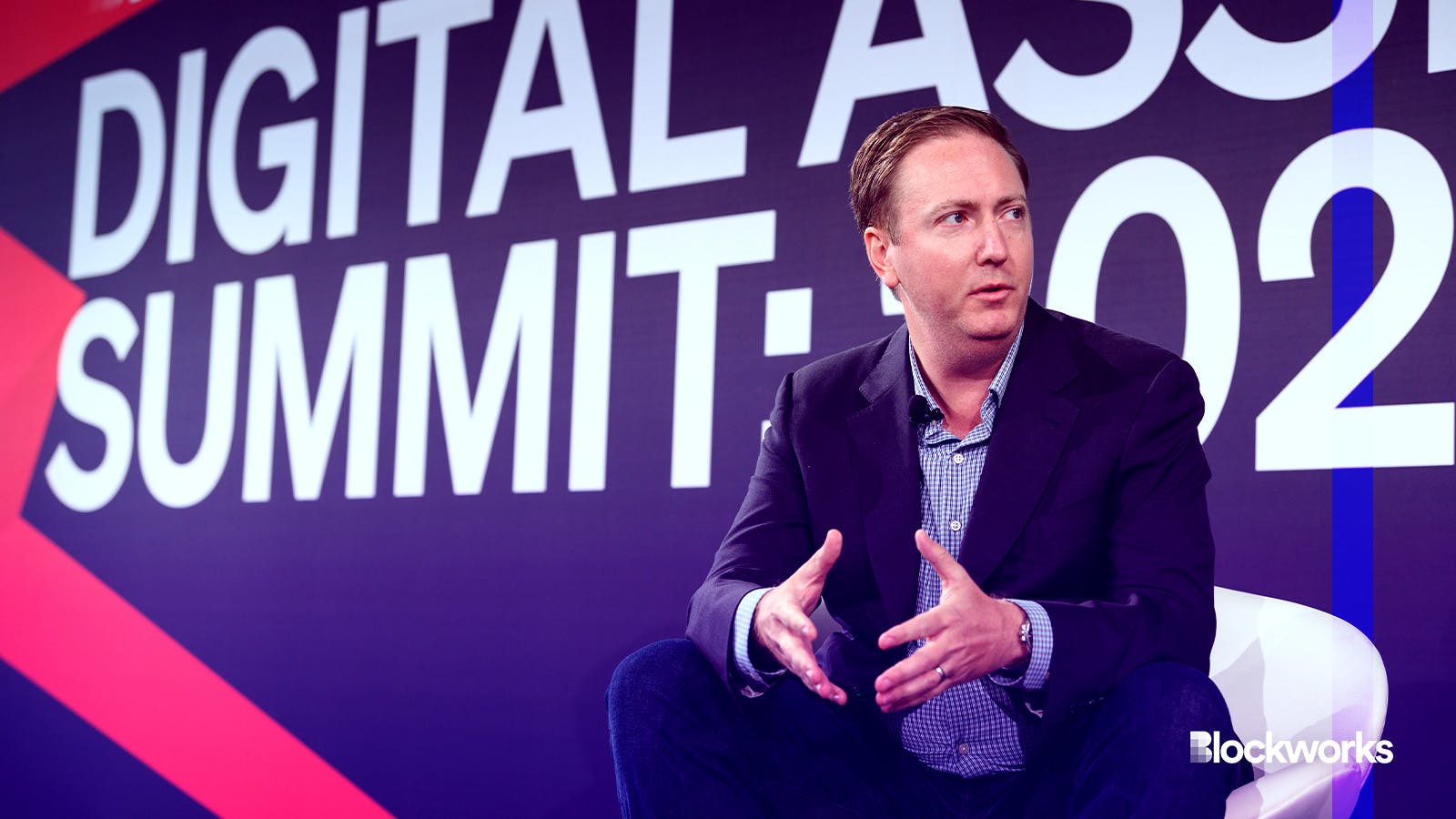Stablecoins remain the silver lining for RWAs: Report
USD-pegged stablecoins remain the most popular tokenized asset, and adoption remains low for other “real-world assets”

Circle VP Finance Patrick Corker | DAS 2022 by Blockworks
USD-backed stablecoins remain the most popular real-world assets (RWA) in the crypto and blockchain space today.
On Tuesday, the Tokenized Asset Coalition (TAC) released its ‘State of Asset Tokenization: Inaugural Annual Report.’ According to its findings, stablecoins are considered the ‘silver lining’ for RWAs, despite the dip in total value over the past two years.
The report notes that when compared to blockchain and VC activity in the crypto space, centralized USD stablecoin issuers Circle and Tether remained relatively resilient to bear market volatility.
According to information available on DeFiLlama, stablecoins currently have a market cap of $133.88 billion, with Tether’s USDT dominating the market with over 70% of the market share.
Aside from USD-pegged stablecoins, other currency-pegged tokens have yet to see meaningful adoption, the report suggests. Euro-pegged stablecoins, for example, only have a total value of $600 million.
Despite the lack of adoption around Euro stablecoins, the space is attracting attention from institutional players. Societe Generale, DWS, and Galaxy Digital, are among the firms which have all launched Euro-pegged stablecoins to compete against the already popular USD options.
The report predicts that 2024 could be a year for the Euro and other currency-pegged stablecoins to take more center stage.
Beyond stablecoins, most tokenization efforts have been put into US Treasury Bills (T-bills), though much of this work is still in its infancy.
Though there were a few T-bill-related products that launched prior to 2023 — mostly all through Franklin Templeton’s Benji — over the past year, this particular space has grown significantly.
There are two primary reasons why tokenized treasuries had not taken off prior to 2023, according to Lucas Vogelsang, CEO and co-founder of Centrifuge.
“The first, and most obvious is the fact that interest rates were near zero, so there was no investor demand,” Vogelsang told Blockworks.
“The second is the maturity of the DeFi industry as a whole. We’re now seeing more maturity from DAOs and DeFi protocols in how they should effectively manage their treasury,” he said.
Once interest rates go down again, investors will likely begin looking for alternative asset classes, he added.
Over 20 companies now that offer tokenized US Treasury-related products, per data aggregator rwa.xyz, totaling an estimated $861 million at the time of writing. Vogelsang believes that T-bills would likely continue to be an appealing place to park idle cash.
“Right now, with rates where they are, there’s less motivation for people to invest elsewhere because they’re earning strong returns with an essentially risk-free investment,” Vogelsang said.
While T-bills may be investors’ first entry point into RWAs, they tend to diversify into other assets, he added. “We expect this trend to continue throughout 2024 and beyond,” he said.
The report highlights that each provider of tokenized U.S. Treasury products distinguishes itself through unique fees, legal structures, eligibility criteria, and security requirements. As of now, no tokenized US Treasury bills have offered a permissionless solution akin to what is currently available with stablecoins.
Another area that has gained interest from industry participants is the tokenization of private credit. Rwa.xyz currently tracks nine protocols in the private credit space, which collectively have a little under $600 million worth of active loans, down from $1.5 billion in May 2022.
Colin Cunningham, TAC Chair, writes in the report that although there has been significant interest in asset tokenization this past year, the volume has “all gone down.” He notes that in order to bring on-chain and off-chain worlds closer together, there must be better blockchain infrastructure.
“Although we’re not there yet, the overall ecosystem of investors, infrastructure, and offerings are beginning to approach a critical mass to enable institutional adoption in the coming years,” Cunningham wrote.
Vogelsang shares this sentiment, noting that regulatory considerations must also be addressed in order to achieve mainstream adoption across different industries.
“We’re seeing significant movement in the APAC region.” he said, citing a “mindset of innovation and regulatory direction.”
Europe is also seeing progress on the regulatory front, but the US lags.
“Though still the financial capital of the world, [the US] needs to catch up on the regulatory side otherwise we’ll continue to fall behind,” he said.
Get the news in your inbox. Explore Blockworks newsletters:
- The Breakdown: Decoding crypto and the markets. Daily.
- 0xResearch: Alpha in your inbox. Think like an analyst.






